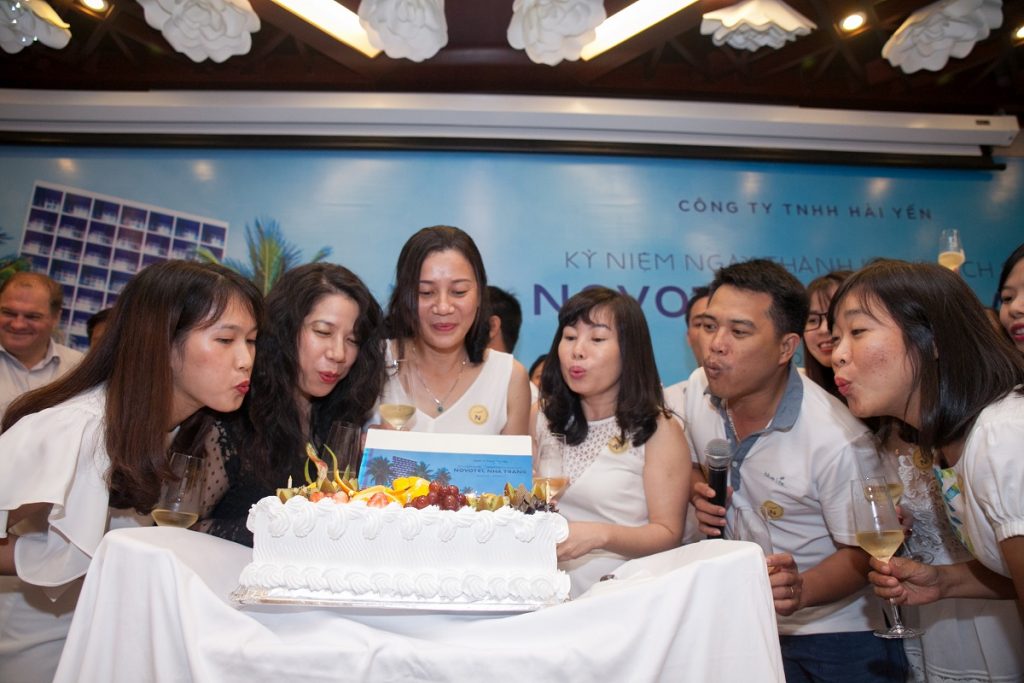The Land of Seafood Noodle Soup

If Pho is the traditional dish of Northern Vietnam, and Bun Bo Hue carries the burning spiciness of the ancient capital’s cuisine, then Nha Trang should be known as “The City of Seafood Noodle Soup”. There are dozens of variations in the city, and each dish can vary significantly from place to place. Regardless of how you spend your time in Nha Trang, make a point of sampling these two street foods: Banh Canh and Bun Sua – both incredibly tasty soup dishes native to the region.
Banh Canh literally means “Soup Cake”- a broth with thick Vietnamese rice noodles or other varieties made from tapioca flour alone or a mixture of rice and tapioca flour. While Banh Canh Cha Ca (Fish Cake Soup) is one of the favorites of the noodle soup aficionados, other versions such as Banh Canh Cua (Crab), Banh Canh Trung Cut (Quail eggs) and Banh Canh Long Ca (Tuna organs) are also very popular.
A bowl of Banh Canh Cha Ca is the harmonious combination of elastic rice noodles, sailfish fillets and homemade fish cake mixed with a savory broth simmered in sailfish and mackerel stock. Created from freshly caught local fish, it can be cooked in two ways: fried or steamed. The unique regional cooking techniques used in the dish have made Cha Ca Nha Trang difficult to replicate in other regions, therefore, you need to be in Nha Trang to discover that authentic flavor. Most local cooks have developed their own individual recipes which become their trademark.
Banh Canh Ba Thua’s (55 Yersin) speciality is an additional side bowl of fish cake, topped with a thick layer of white onion slices and traditional spicy sauce, and Banh Canh Hai Ca (78 Nguyen Thi Minh Khai) is a great place to discover other versions containing squid cake, sentinel-crab and mackerel.
Of course, any discussion about noodle soup in Nha Trang would be incomplete without mentioning Bun Sua (Jellyfish noodle soup). While at first you may be reluctant to try this dish due to the fear of their painful stings, the jellyfish used for Bun Sua is very different. Local fishermen need to travel far out to the sea to catch this particular species. It is then processed with guava leaves containing a unique acid which cleanses the jellyfish and removes the toxins that cause skin irritation. The result is a product that is perfectly edible and highly nutritious, providing that distinct crunchy texture that is so important in Vietnamese cooking.
At first sight, it would seem that Bun Sua is a very simple dish. However, due to the complexity in cooking it perfectly, nothing but the finest technique will suffice. A real delicious bowl must have a delicate fish taste created from its broth, sweetened by simmered tomato, and heightened with fresh crunchy jellyfish combining perfectly with the soft white rice noodles.
There are not too many places in the city that can do this dish justice, so it’s best to seek out a specialist provider. We suggest visiting one of the following restaurants to get the perfect bowl of Bun Sua: Cay Bang Restaurant (06 Han Thuyen), Hung Quy Stall (8A Ngo Thoi Nhiem) and Nguyen Loan Restaurant (123 Ngo Gia Tu).
.







